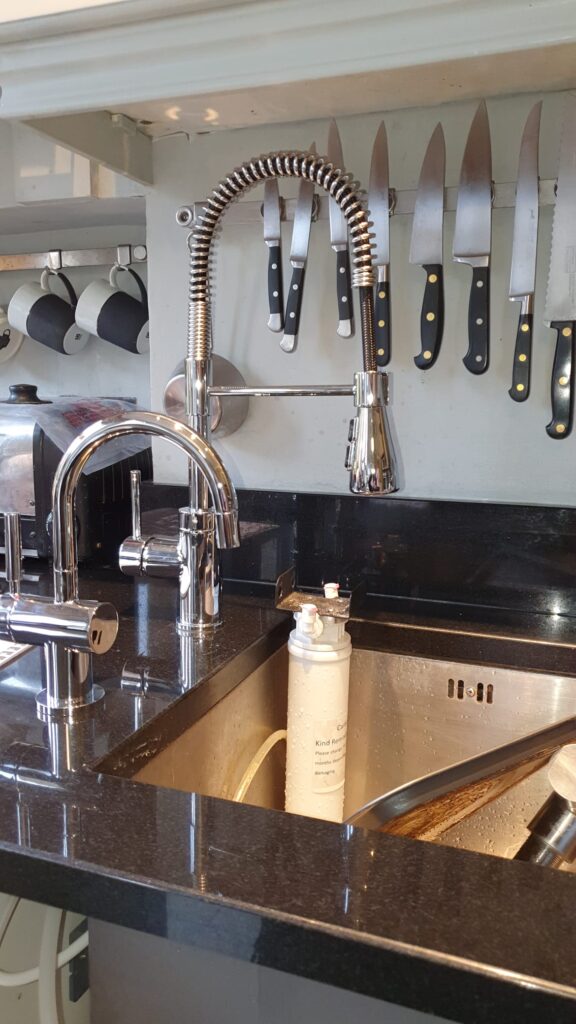Introduction
Dealing with a slow drain can be a frustrating and inconvenient experience. Whether it’s in your kitchen sink, bathroom, or shower, a slow drain can disrupt your daily routine and cause unpleasant odors. Fortunately, there are several effective methods you can use to clear a slow drain quickly and restore proper drainage. In this article, we will explore various techniques, tips, and tricks to help you address this common household issue. So let’s dive in and discover how to clear a slow drain quickly!

Why Is My Drain Slow?
Before we jump into the solutions, it’s essential to understand the common causes of a slow drain. By identifying the underlying issue, you can take appropriate measures to resolve it effectively. Here are a few possible reasons why your drain may be slow:
- Accumulation of debris: Over time, hair, soap scum, food particles, and other debris can build up in your drains, leading to clogs and reduced water flow.
- Grease and fat buildup: Pouring cooking grease or fat down the drain can cause a sticky residue to accumulate on the pipe walls, restricting water flow.
- Mineral deposits: Hard water can leave mineral deposits on the inside of pipes, narrowing the passageway and impeding drainage.
- Tree roots: In some cases, invasive tree roots can infiltrate underground sewer lines, causing blockages and slow drains.
Methods to Clear a Slow Drain
Now that we understand the common causes let’s explore effective methods to clear a slow drain quickly. Remember, prevention is key, so it’s essential to implement these techniques regularly to maintain healthy drains.
1. Boiling Water
Boiling water is a simple yet effective method to clear minor clogs in your drains. Here’s how to do it:
- Boil a kettle or pot of water.
- Carefully pour the boiling water directly into the drain in three to four stages, allowing each round of water to work for a few seconds before pouring more.
- This method is most suitable for clearing grease or soap scum buildup.
2. Baking Soda and Vinegar
Baking soda and vinegar form a powerful natural cleaning agent that can help break down stubborn clogs. Follow these steps:
- Pour half a cup of baking soda down the drain.
- Follow it with half a cup of white vinegar.
- Cover the drain with a plug or cloth and let the mixture sit for about 30 minutes.
- Afterward, flush the drain with hot water.
3. Plunger
A plunger is a classic tool for clearing clogs in toilets, sinks, and showers. Here’s how to use it effectively:
- Ensure there is enough water in the drain to create a seal.
- Place the plunger over the drain, ensuring a tight fit.
- Vigorously push and pull the plunger, creating suction to dislodge the clog.
- Repeat the process several times if necessary.
4. Plumbing Snake
For more stubborn clogs, a plumbing snake can be highly effective. Follow these steps:
- Insert the end of the plumbing snake into the drain.
- Rotate the handle clockwise while pushing the snake further into the pipe.
- Once you feel resistance, continue rotating and pushing to break through the clog.
- Slowly retract the snake, pulling out any debris or blockages.
FAQs
- Q: Can I use chemical drain cleaners to clear a slow drain? A: While chemical drain cleaners may provide temporary relief, they can be harsh on your plumbing system and harmful to the environment. It’s best to use natural methods or seek professional assistance.
- Q: Are slow drains a sign of a more significant plumbing issue? A: In some cases, slow drains can indicate a more severe plumbing problem, such as a damaged or collapsed pipe. If the issue persists or worsens, it’s advisable to consult a professional Bristol plumber.
- Q: How often should I clean my drains to prevent clogs? A: Regular maintenance is crucial to prevent clogs. Consider implementing drain cleaning methods once a month to keep your drains free from buildup.
- Q: Can I prevent hair clogs in the shower drain? A: Yes, using a drain cover or strainer in your shower can effectively catch hair and prevent it from going down the drain, reducing the likelihood of clogs.
- Q: What if none of the methods mentioned work? A: If your efforts to clear a slow drain are unsuccessful, it’s time to seek professional help. A licensed plumber has the expertise and tools to diagnose and resolve more complex drainage issues.
- Q: How can I maintain healthy drains in the long term? A: Besides regular cleaning, there are several preventative measures you can take, such as avoiding pouring grease down the drain, using mesh screens in sinks, and being mindful of what goes into your garbage disposal.
Conclusion
Dealing with a slow drain can be a nuisance, but armed with the right knowledge and techniques, you can quickly restore proper drainage. In this article, we’ve explored various methods to clear a slow drain quickly, including boiling water, baking soda and vinegar, plungers, and plumbing snakes. Remember to prioritize preventive measures to maintain healthy drains in the long run. If all else fails, don’t hesitate to contact a professional plumber for assistance. Now you have the tools to tackle slow drains and keep your plumbing flowing smoothly!
